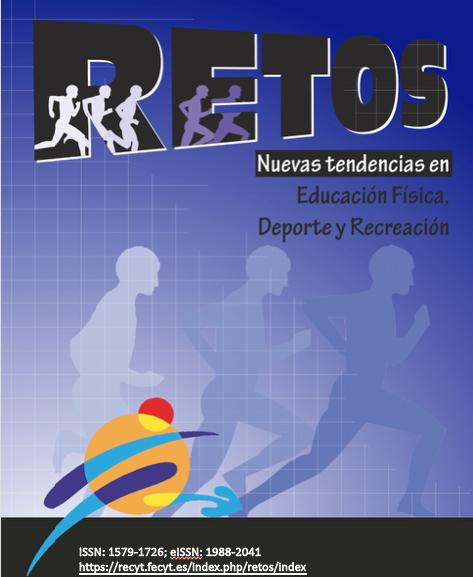Motor performance of children with tea during the TGMD-3 test
DOI:
https://doi.org/10.47197/retos.v51.100341Keywords:
Avaliação motora, Crianças, Distúrbios do neurodesenvolvimentoAbstract
Introduction: Children with Autism Spectrum Disorder (ASD) may present deficits in motor coordination and the prior identification of these changes allows for the design of early intervention programs. Purpose: To evaluate the motor aspects of children diagnosed with ASD using the TGMD-3 test. Methods: A cross-sectional observational investigation was carried out in which the motor coordination of children with ASD was evaluated using the TGMD-3 test. The Shapiro-Wilk test was used to evaluate the normality of the data. Descriptive statistics were performed using the mean and standard deviation. The Wilcoxon test was used to verify the differences between locomotion skills and ball skills and between boys and girls. Statistics were performed using R-Studio software. The significance value adopted was p = 0.05. Results: 56 children with reported ASD (6.59 ± 2.4 years) participated in the study, who performed the TGMD-3 tasks and the majority presented delay or alteration of motor coordination. Furthermore, girls show slightly better results compared to boys. Conclusion: Children with ASD had delayed or impaired motor coordination and girls had slightly better results than boys. Assessment of children's motor coordination allows early interventions to be tracked, minimizing negative impacts on motor coordination.
Keywords: Motor evaluation. Children. Neurodevelopmental disorders.
References
Allen, K. A., Bredero, B., Van Damme, T., Ulrich, D. A., & Simons, J. (2017). Test of Gross Motor Development-3 (TGMD-3) with the Use of Visual Supports for Children with Autism Spectrum Disorder: Validity and Reliability. Jour-nal of Autism and Developmental Disorders, 47(3), 813–833. https://doi.org/10.1007/s10803-016-3005-0
American Psychiatric Association. (2014). DSM-5—Manual Diagnóstico e Estatístico de Transtornos Mentais (5a edição). Art-med.
Bremer, E., & Cairney, J. (2018). The Interrelationship Between Motor Coordination and Adaptive Behavior in Children With Autism Spectrum Disorder. Frontiers in Psychology, 9. https://doi.org/10.3389/fpsyg.2018.02350
Fetit, R., Hillary, R. F., Price, D. J., & Lawrie, S. M. (2021). The neuropathology of autism: A systematic review of post-mortem studies of autism and related disorders. Neuroscience and Biobehavioral Reviews, 129, 35–62. https://doi.org/10.1016/j.neubiorev.2021.07.014
Fournier, K. A., Hass, C. J., Naik, S. K., Lodha, N., & Cauraugh, J. H. (2010). Motor Coordination in Autism Spectrum Disorders: A Synthesis and Meta-Analysis. Journal of Autism and Developmental Disorders, 40(10), 1227–1240. https://doi.org/10.1007/s10803-010-0981-3
Kaur, M., M Srinivasan, S., & N Bhat, A. (2018). Comparing motor performance, praxis, coordination, and interpersonal synchrony between children with and without Autism Spectrum Disorder (ASD). Research in Developmental Disabilities, 72, 79–95. https://doi.org/10.1016/j.ridd.2017.10.025
Loomes, R., Hull, L., & Mandy, W. P. L. (2017). What Is the Male-to-Female Ratio in Autism Spectrum Disorder? A Systematic Review and Meta-Analysis. Journal of the American Academy of Child and Adolescent Psychiatry, 56(6), 466–474. https://doi.org/10.1016/j.jaac.2017.03.013
Onzi, F. Z., & Gomes, R. de F. (2015). TRANSTORNO DO ESPECTRO AUTISTA: A IMPORTÂNCIA DO DIAG-NÓSTICO E REABILITAÇÃO. Revista Caderno Pedagógico, 12(3), Article 3. http://www.univates.br/revistas/index.php/cadped/article/view/979
Quedas, C.L.R.; Famá D´Antino, M.E.; R. Quintas, R.H.; Cymrot, R.; Rocha, M.M.; Blascovi-Assis, S.M. MABC-2 Transcultural Adaptation and Evaluation of Children Aged 7 to 10 Years with Autistic Spectrum Disorder. Rev. Contex-to Saúde 2021, 21, 183–197, doi:10.21527/2176-7114.2021.44.11833.
Rosa Neto, F. (2002). Manual De Avaliacao Motora (1a edição). Penso.
Rynkiewicz, A., & Łucka, I. (2018). Autism spectrum disorder (ASD) in girls. Co-occurring psychopathology. Sex differ-ences in clinical manifestation. Psychiatria Polska, 52(4), 629–639. https://doi.org/10.12740/PP/OnlineFirst/58837
Soares, A. M., & Cavalcante Neto, J. L. (2015). Avaliação do Comportamento Motor em Crianças com Transtorno do Espectro do Autismo: Uma Revisão Sistemática. Revista Brasileira de Educação Especial, 21, 445–458. https://doi.org/10.1590/S1413-65382115000300010
Ulrich, D. A. (2019). TGMD-3: Test of Gross Motor Development (3o ed). Pro Ed.
Zhao, W., Hui, M., Zhang, X., & Li, L. (2021). The Relationship between Motor Coordination and Imitation: An fNIRS Study. Brain Sciences, 11(8), 1052. https://doi.org/10.3390/brainsci11081052
Downloads
Published
Issue
Section
License
Copyright (c) 2023 Retos

This work is licensed under a Creative Commons Attribution-NonCommercial-NoDerivatives 4.0 International License.
Authors who publish with this journal agree to the following terms:
- Authors retain copyright and ensure the magazine the right to be the first publication of the work as licensed under a Creative Commons Attribution License that allows others to share the work with an acknowledgment of authorship of the work and the initial publication in this magazine.
- Authors can establish separate additional agreements for non-exclusive distribution of the version of the work published in the journal (eg, to an institutional repository or publish it in a book), with an acknowledgment of its initial publication in this journal.
- Is allowed and authors are encouraged to disseminate their work electronically (eg, in institutional repositories or on their own website) prior to and during the submission process, as it can lead to productive exchanges, as well as to a subpoena more Early and more of published work (See The Effect of Open Access) (in English).
This journal provides immediate open access to its content (BOAI, http://legacy.earlham.edu/~peters/fos/boaifaq.htm#openaccess) on the principle that making research freely available to the public supports a greater global exchange of knowledge. The authors may download the papers from the journal website, or will be provided with the PDF version of the article via e-mail.


